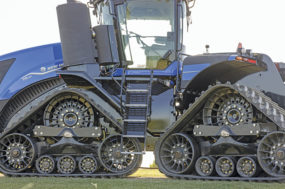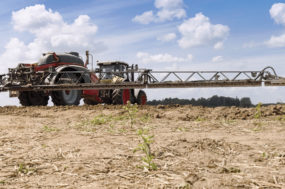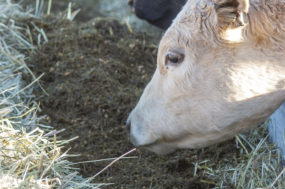It was 2016, 48 months after the 2012 Midwest drought. Agriculture manufacturers were strong on production and were pushing equipment hard, chasing every deal they could because producers just didn’t upgrade equipment unless they had to.
That’s enough of a history lesson; 2016 is behind us. I always say, don’t worry about what the past was like, be thinking about what the future will be like. Today (yes, today) in 2021, we are creating history with agriculture equipment, and I will explain what I feel are some very important outlooks to think about if you plan to trade or upgrade.
Availability
As I refer to my opening sentence in the first paragraph, five years ago, agriculture machinery was packed into dealer lots like … well, let’s say like hay bales – tight. Today, drive by a dealer lot and they have tillage tools unfolded, header trailers parked longways, combines (if they have any) parked with the augers out, and you can dang sure park up by the door because they hardly have any lawnmowers around either. It has become a challenge for dealers to get equipment to put on the lot if it wasn’t there at the beginning of the year. There are several factors that contribute to this shortage: post-COVID production slug, steel and input prices, and a grain market currently headed north at a very fast pace.
Record sales
As we started 2021, I felt producers were very sluggish from 2020 and were really sitting on a teeter totter: What do I do, run what I have or trade and upgrade? The U.S. had a leadership change, we were nine months into a pandemic and we witnessed a grain market increase during fall harvest. Then, for some reason, “bang” … the gun went off and the race was on to buy equipment and trade and upgrade. The most common question I have gotten recently is: “Where is it located and when can I get it here?”
These are questions that have surfaced another challenge besides availability and that is freight and movement of machinery to other dealers. I know of one manufacturer at least 30 days behind on shipping orders just due to logistics and the workforce. Oh, and I won’t forget to mention that if the producer can’t get it at his local dealer, then it’s “Hold on – fuel up the Caddy; we are going on a road trip (or to the computer) to find what we want.” We have witnessed all-time-record sales at the dealership level lately (and I won’t forget to mention that at auctions, it seems like producers are giving just as much or more than advertised prices at the dealer level).
Production
Several factors go into production of agriculture machinery, and the very biggest is people. It takes people doing these manufacturing jobs in agriculture machinery. Unlike the automotive industry, very little agriculture machinery is assembled robotically. (I bet that changes very quickly in the near future, though.) As I look at agriculture machinery manufacturers and relate to other industries across the globe, I often ponder if they have hit a point of JIT (“just in time”) production. I think manufacturers could very easily say, “This is what we have components for, time slots for in the plants and expected market, so this is all we are going to produce this year.” In reality, it’s a very modern management practice. It reduces carryover inventory issues down the road and allows for way more efficient production.
The back half of 2021
This is the most interesting time of the year in the agriculture machinery world, I think. We are all processing what has sold so far, what producers are searching for to upgrade or replace, and what we need to bring to the dealer lots for market in the next year. This all unfolds very quickly, as dealers are optimistic from price increases and an already existing equipment shortage issue. I had one dealer recently tell me, “Well, if I don’t have it for my customers and a dealer 100 miles away does, and he buys it from them, I have a 50 percent chance to retain that customer now. There is very little loyalty left in the ag machinery world in 2021.”
Another factor I don’t want to leave out is: As we witness grain market movement in the back half of 2021, how will producers shop for that tax-season purchase? It’s very hard to move machinery when you don’t have it or it’s not available at the end of the year.
In closing, I think if producers are interested in trading or upgrading equipment, they better get started on it now. We have all heard that saying, “I’m a day late and a dollar short.” These are very common words in the agriculture machinery world nowadays.
Stay safe, everyone. ![]()
Getty Images.

-
Gregg Zurliene
- Territory Manager
- Poettinger US Inc.
- Email Greg Zurliene











